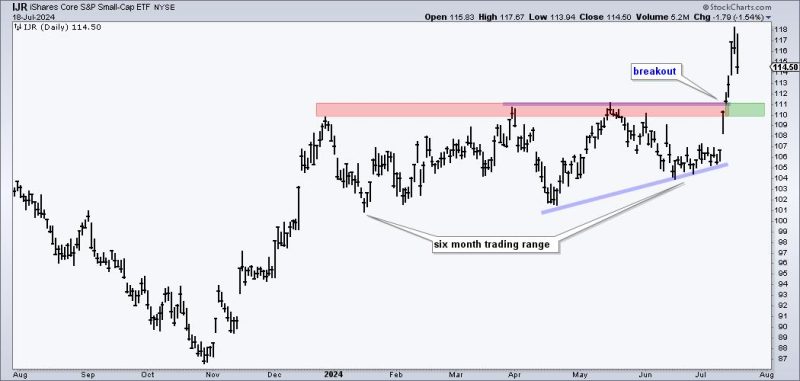Small Caps Break Out and Lead: Now What?
Small-cap stocks have been an interesting area of focus for investors in recent times. With the market experiencing various fluctuations due to economic uncertainties and global events, small-cap stocks have managed to break out and take the lead. This trend has captured the attention of many investors who are now wondering what the future holds for these smaller companies.
One of the key reasons behind the breakout of small-cap stocks is their ability to adapt and innovate quickly. Unlike their larger counterparts, small-cap companies are often more nimble and can adjust to changing market conditions faster. This agility has allowed many small-cap stocks to capitalize on emerging trends and opportunities, leading to their increased performance and growth.
Additionally, small-cap stocks are often less correlated with the broader market. This means that they can provide diversification benefits to investors looking to reduce their overall portfolio risk. By including small-cap stocks in their investment mix, investors can potentially enhance their returns while lowering their exposure to market volatility.
However, the outperformance of small-cap stocks does not come without risks. These companies are typically more volatile and may be subject to greater price fluctuations compared to larger, more established firms. Investors who choose to invest in small-cap stocks should be prepared for increased volatility and be willing to ride out the ups and downs that come with investing in these companies.
Furthermore, small-cap stocks can also face challenges in terms of liquidity and market access. Due to their smaller size, these companies may have lower trading volumes and be less liquid than larger stocks. This lack of liquidity can make it difficult for investors to buy or sell shares at their desired price, potentially leading to slippage and higher transaction costs.
As small-cap stocks continue to lead the market, investors should carefully evaluate their investment choices and consider the potential risks and rewards. While small-cap stocks can offer attractive growth opportunities, they also come with increased volatility and liquidity challenges that investors need to be aware of.
In conclusion, the breakout of small-cap stocks and their leadership in the market present both opportunities and risks for investors. By understanding the unique characteristics of small-cap companies and carefully weighing the potential benefits and challenges, investors can make informed decisions about including small-cap stocks in their investment portfolios.

